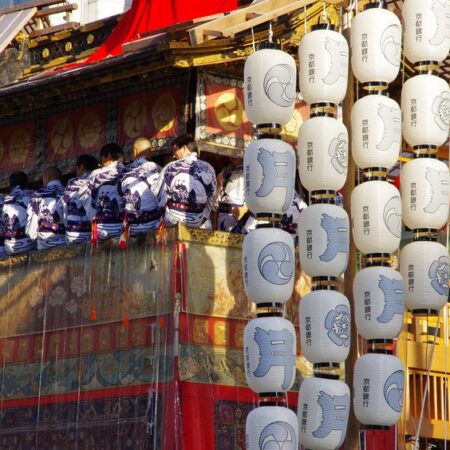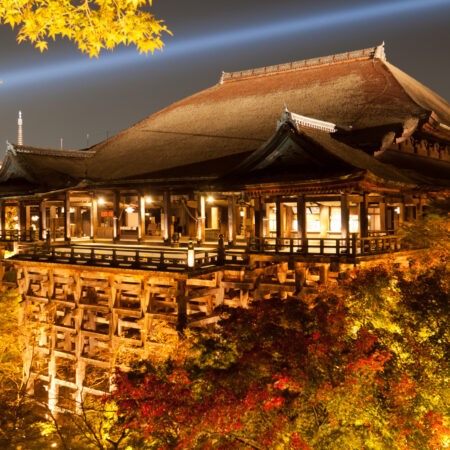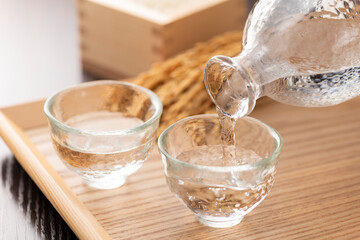What is Sake
The origin of sake is about 2000 years ago. It is a traditional Japanese sake that has been drunk since the Yayoi period. It is no exaggeration to say that the history of sake is the history of Japan and the traditional Japanese culture itself. Sake was both a sacred offering to the gods and a medicine. October 1st is “sake Day”, the harvest season of rice in October, the season when sake making begins.
Components of Sake
Sake is a brewed alcoholic beverage made from rice, rice koji and water. It is a product of Japan’s unique rice natural blessings and human wisdom, and it is also called “a national Japanese alcohol”, which connects people to people. Sake, which is the best partner of “Japanese food (washoku)” registered as a world intangible cultural heritage, is made from rice suitable for sake brewing that is the world’s most expensive alcohol raw material. 80% of sake is water, and it is said that the quality of clear water in Japan determines the quality of sake. As with other fermented foods in Japan, it is a fermented beverage made suing micro-ingredients such as yeast and koji mold. You can enjoy a wider variety of locally brewed sake. There is also the pleasure of choosing sake made with the thoughts of brewers and chief brewers.
The appeal of Sake
It has a wide range of temperatures that can be enjoyed both cold and warm, and can be enjoyed cold in the summer and hot in winter. It is an insectivorous sake that goes well with a wide range of dishes, especially with seafood, thank s to the effects of koji. It is an alcoholic beverage that contains umami ingredients such as amino acids. Among alcoholic beverages, it has a low cooling effect on the body, and is also a healthy drink that is said to have a high skin-beautifying effect. There is a wide variety of local sake that makes use of the characteristics of each region. Sake is special kind of alcohol made from sake rice, which is more expensive that a regular edible rice. It is a high-value-added sake that requires advanced technology called multiple parallel fermentation. Originally, during the Yayoi period, when rice cultivation was established, the yeast in the air was used to ferment heated grains by chewing them well (kuchikami-shu). This is a work that only shrine maidens were allowed to do, which is why sake is said to have beed used for Shinto rituals.
Sake production
The brewing method using rice koji became popular in the Nara period. After the middle of Heian period, it became a smooth sake, unlike sake with a high viscosity. The foundation of sake brewing was solidified, and brewing techniques such as pasteurization and alcohol-addition method improved during the Edo period. After the Meiji era, a national brewing laboratory was established, and the chemical theory became essential for sake brewing. From the Taisho era to the early Show era, technological innovation such as the invention of the rice milling machine and the pure culture of yeast were carried out one after another. Today, technology and machines are evolving, but the heart of sake is the complicated process that cannot be left to machines. The skills and sense of sake brewers cultivated over many years are essential.
The future of Sake
The ratio of sake consumption to all alcoholic beverages has fallen to about 7%, and the number of breweries, which had more than 4,000 in 1955, has decreased to less than half. Sake is said to be difficult to understand, difficult to drink, and smells worse than one’s age, and the demand for sake continues to decline. Young people are whispering away from sake. It’s easy to empty a bottle of wine, but if you drink 4 go (1 go= 180ml) of sake, it’s enough. This is mostly because that sake has a low acidity, so people get tired of it easily. Therefore, it seems that attempts are being made to make sake with a little more sourness. From a global perspective, the alcohol content of sake is a little high, so breweries that make delicious sake at 12 to 13 degrees have various health benefits, such as suppressing cancer cells and preventing diabetes and high blood pressure. It is said, in addition, that it improves blood circulation, promotes metabolism, and is useful for relaxation and stress relief. Sake is a “source of life” that is good for the body and gives vitality to Japanese people now and in the past! Now, why don’t you try sake and taste the Japanese national sacred drink?!






